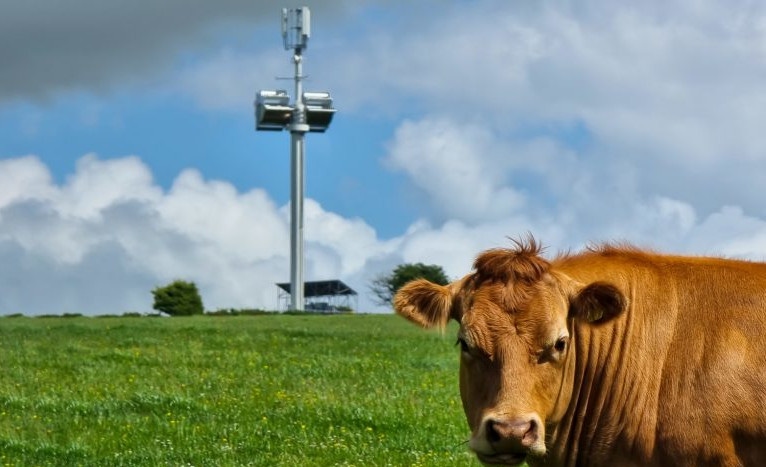UK operator Vodafone has switched on a 4G phone mast in Wales loaded with a wind turbine, solar panels and on-site battery storage.
June 15, 2022

UK operator Vodafone has switched on a 4G phone mast in Wales loaded with a wind turbine, solar panels and on-site battery storage.
The ‘self-powering’ mast will provide 4G coverage to the community of Eglwyswrw, and Vodafone says it potentially removes the need for a connection to the national electricity grid – which if true certainly has application for providing connectivity to extremely remote areas.
The Crossflow Energy wind turbine can apparently generate power even in light winds, and the mast can be installed without the need to dig trenches and lay electricity cables. We’re assured that this design of wind turbine doesn’t make a racket either, and that it can be ‘filtered out’ as a solid object by radar, birds are bats’ somehow, which presumably means less avian fatalities.
The site will run for two years and the data gathered analysed and used to work out where best similar units can be deployed.
“Connectivity is vital to everyone, no matter where you live,” said Andrea Dona, Chief Network Officer and Development Director at Vodafone. “This self-powering mobile phone mast, with on-site battery storage, could help us connect places that were previously impossible to reach. It will also help us reduce carbon emissions and minimise our impact on local environments. If this trial is a success, we would like to roll out more ‘self-powering’ masts, with a focus on areas with poor or no coverage.”
Martin Barnes, CEO at Crossflow Energy added: “We are incredibly excited to be partnering with Vodafone on this UK first. Until now, the use of ‘small wind’ turbines in the race to net zero has been limited due to issues of performance, reliability, and planning concerns such as noise, vibration, and damage to ecology. The unique design of our wind turbine addresses all these challenges head on. We believe that one day its use could be as widespread and commonplace as solar panels.”
Vodafone started working with Crossflow Energy last year with the intention of deploying its Transverse Axis Wind Turbines into masts in order to power them, so the fruit of that partnership seems to have arrived relatively swiftly.
Deutsche Telekom and Ericsson announced a similar solar and wind energy powered 5G site in May, which they say can be self-sufficient given the right conditions. So in general the tech is clearly coming along to a point where its entirely doable to set these sort of self-powering masts up, at least on a trial basis, and if they prove reliable it seems the sort of practical green move that’s hard to see a downside to.
Get the latest news straight to your inbox. Register for the Telecoms.com newsletter here.
About the Author(s)
You May Also Like








.png?width=300&auto=webp&quality=80&disable=upscale)


_1.jpg?width=300&auto=webp&quality=80&disable=upscale)


.png?width=800&auto=webp&quality=80&disable=upscale)